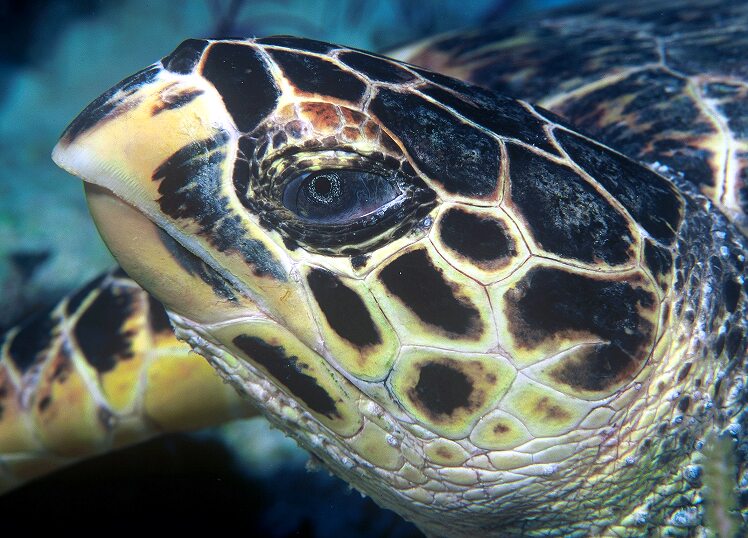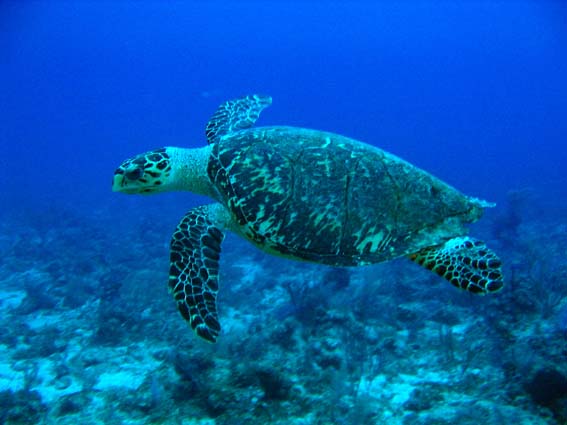
Many sea turtles swim in the waters throughout the state of Hawaii, but the rarest of them all is the critically endangered ‘Ea, or Hawksbill sea turtle, which can only be found in the waters around big island’s Ka’u district. Less than 100 nesting females come ashore every year to lay their eggs in the sand on Ka’u’s sparse sandy beaches. Most of Southern Hawaii island is rocky shoreline, so the few places that do have sand are pretty much guaranteed turtle nesting sites. Unfortunately for the turtles humans enjoy all of these beaches as well, and Hawksbill numbers have declined significantly since development around many of the beaches began in the mid-90’s.
Unlike the Hawaiian green sea turtle which converts to an entirely vegetarian diet upon reaching maturity, Hawksbills are exclusively carnivorous, feeding on sponges and small invertebrates they find on the reef. Because of their diet Hawksbills are the most tropical of all turtles, never venturing out of warm waters for their entire lives. They’re fairly easy to identify, sporting a large, pointed, hawk-like beak (hence the name). It’s shell is covered in overlapping scutes that resemble shingles on a roof, giving the turtle something of an armored appearance. Hawksbills only grow to about 3 feet in length, but may weigh up to 200lbs. Adults are neutrally buoyant, meaning that while in sea water they will neither rise nor float. However, many of the areas these turtles frequent include freshwater ponds connected to the shore. Fresh water, being less dense than sea water, causes the turtles to sink whenever they’re not swimming. Snorkeling the freshwater ponds of Na’alehu’s Honuapo (Whittington Beach Park) will usually provide views of Hawksbill turtles resting on the bottom.

Female Hawksbills will come ashore to nest every 2-5 years, and may nest up to six times per season at 2-3 week intervals, each time depositing usually 150-200 eggs. Adults reach maturity at age 30, and livespan is believed to be around 50 years, but may be longer.
The easiest place to see Hawksbill Sea Turtles is at Honuapo (Whittington Beach Park) Many of the turtles return to the safety of the freshwater pools here at night, and to enter them they must swim through a 5-foot wide channel in the shoreline. If you stand at this spot (the eastern extent of the park, just walk to where the pond meets the sea) as the sun is setting you have an extremely good chance of seeing not just one, but possibly even several turtles.
Other places where Hawksbill sightings are common include Punalu’u (Black sands), Kawa’a Beach, and Ocean View’s Pohue Bay.
